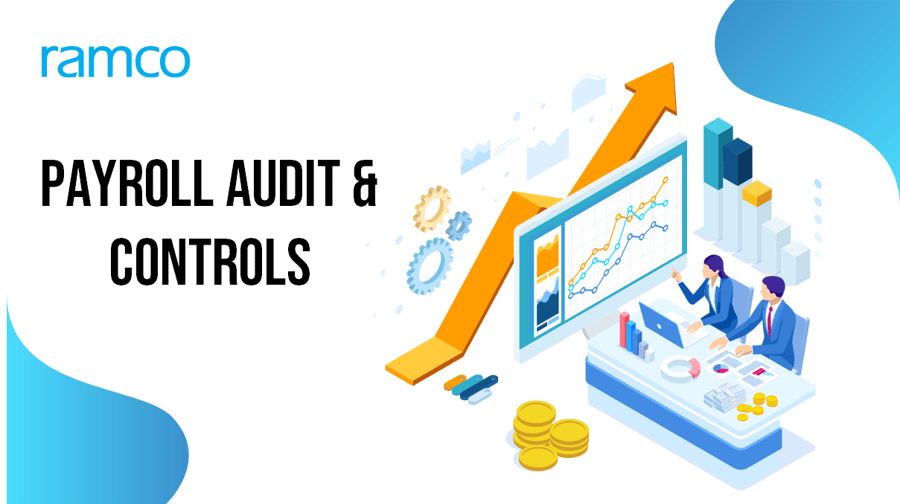

In this day and age where most things around us are fast-changing, payroll is no exception. It is also transforming to keep pace with the changing needs of employees and employers today. And when it comes to HR and payroll, companies deal with a variety of scenarios and challenges on a day to day basis. Many a time, these problems are caused due to missing payroll-related internal controls or insufficient audit on payroll inputs and outputs. This is where payroll software comes into play, providing a streamlined and automated solution for managing payroll processes.
In our last blog on payroll auditing, we analyzed why an organization must perform payroll audits regularly. In this blog, we highlight the key points that must be frequently checked to maintain payroll hygiene which in turn will make the payroll process efficient, thus lowering the irregularities that will reflect during payroll auditing. We had mentioned in the earlier blog, “The general idea of regular payroll audits is to reduce the errors, maintain compliance, stay updated, and improve the payroll processes. This leads to good payroll practices.” And now, we are going to discuss exactly that!
Checklist for audit
A regular internal payroll audit is strongly recommended, ideally for every pay period. It will help identify errors in payroll inputs (these would be inputs fed in manually more often than not), false or fraudulent inputs in the payroll, etc. This will allow the organization to report and rectify it within the pay period, to avoid any losses to the organization or any dissatisfaction to the employees. Some important data points for audit are:
- Input data changes: Any change in data that can directly or indirectly impact the payroll output should be audited. A few examples of input data are compensation change, one-time payroll values, employment information change, etc. If the auditor finds any discrepancy in the input data, he/she should look for further details, the Who-When-How-Why of things to arrive at a solution, that should prevent the recurrence of the same issue in future payroll runs. This process can be significantly simplified with the use of the best payroll software, which can automate data entry and reduce the likelihood of errors.
- Who made these incorrect entries?
- When did the user make these entries?
- How were these entries made/done? Using which medium?
- Why were these entries done? (To be explained by the user)
- User Access Audit: The auditor needs to check for changes that occurred in terms of user access on employee’s employment information or payroll records to determine if any unauthorized user access has been provided. Payroll software can help in managing user access and maintaining security
- Payroll Output Audit: Any inconsistencies in the payroll processed, without proper justification by the payroll maker/checker must be identified, analyzed, and resolved. The best payroll software can provide comprehensive reports and analytics to aid in this process.
Payroll controls
Establishing effective controls in the payroll process can result in minimum or no errors while processing payroll. Some of the internal controls include:
- Separation of tasks – The payroll system should not be user-dependent, but process dependent. The payroll process is a complex one with several stages, starting from getting the employee data, payroll inputs, time inputs to payroll processing, and payroll accounting. There should be in place a clear identification of a user’s role and the tasks that are to be performed by them. Dividing payroll tasks among different users will ensure that no one person has complete control of the payroll from start to end, which may cause an error or fraud. The best payroll software in the market can help in effectively managing these tasks and ensuring a smooth payroll process.
- Single source of truth: If the employee data is integrated through a third-party system for payroll, then it will be considered as the source of truth for employee data. No changes should happen at the receiving source to ensure synchronized information in both systems which in turn drives the payroll output. For example, if employee data is integrated from 1 HRIS or payroll system to Ramco, integrated data should not be changed in the receiving system (Ramco). Any change required in employee data should be done in the source system and then it should be integrated with the receiving system (Ramco). This will ensure data is in sync in both the systems, making sure it results in proper payroll output without discrepancies. The best payroll software can assist in maintaining this single source of truth.
- Maker & checker for all important transactions: All important input/ output transactions should have a maker and checker so that any discrepancy in the transactions can be identified at the stage of the input itself. For important transactions which have a direct or indirect impact on payroll output, there should be, at least, a single level of approval, i.e., a maker to make the entry and checker to verify it. This will ensure that if the maker makes a manual error or a fraudulent entry, it can be identified by the checker, during individual transaction which happens much before the payroll processing. Payroll software can automate this process, reducing the likelihood of errors.
Minimizing human involvement: Any process in payroll automation, using business logic, should be done so with minimum/no exception. This is one of the best ways to reduce errors and improve payroll efficiency. The best payroll software or solution can automate many of these processes, minimizing human involvement and thereby reducing the potential for errors.
The Role of Payroll Services in Error Prevention and Auditing
The key to effective payroll auditing and minimizing errors lies in utilizing payroll services that provide consistent monitoring and automation. Regular audits are crucial to ensure that every payroll input — from compensation changes to time entries — is accurate and justified. A payroll system that integrates audit functionality will allow HR teams to track who made changes when those changes occurred, and why they were necessary. For instance, if a user mistakenly enters a compensation change or omits necessary deductions, an automated payroll service will flag these discrepancies, enabling payroll teams to correct them in real time.
Payroll services also help maintain compliance by automatically updating tax rates and social security contributions, ensuring that payroll data remains consistent with local regulations. In an increasingly globalized workforce, managing payroll in multiple jurisdictions requires a payroll system that can handle complex payroll tasks and track employee data across different locations. Automation can ensure that employees' paychecks are accurate, taxes are properly deducted, and local laws are followed without manual intervention.
Strengthening Payroll Controls with Advanced Payroll Systems
An efficient payroll system not only simplifies payroll processing but also strengthens internal controls within the payroll process. For example, a good payroll service will include role-based access controls, where only authorized personnel can make changes to payroll records or employee data. By implementing a payroll system with clear separations of duties (e.g., a "maker and checker" system), employers can ensure that critical transactions are verified by different individuals, reducing the risk of errors or fraud.
Moreover, using a payroll system that maintains a "single source of truth" for employee data is crucial for ensuring consistency and accuracy. When employee data is integrated from a centralized source, changes to employee details must be made in the source system, which is then automatically updated in the payroll system. This ensures that the payroll output reflects the most up-to-date information, preventing discrepancies and ensuring seamless payroll processing.
In addition, minimizing human involvement in routine payroll tasks is essential to improving payroll efficiency. A payroll system powered by business logic can automate the calculations for tax deductions, overtime pay, and bonus structures, reducing the potential for errors and allowing HR teams to focus on more strategic tasks. Automation also speeds up payroll processing times, ensuring employees are paid on time and payroll services are delivered without delays.


